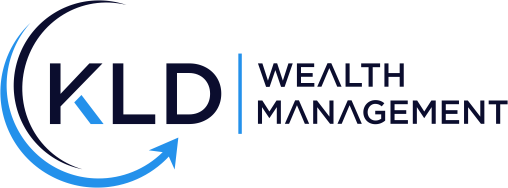Get in touch
Call or Text:
937-404-5180
Email:
dwiedmeyer@kldwealth.com
The term “Tax Control Triangle” might not come up often at the dinner table, but when it comes to retirement planning, it’s one of the most powerful strategies you can use. Imagine having a plan that allows you to decide how much you pay in taxes, when you pay them, and how you can keep more of your money working for you in retirement. Sounds good, right?
If you’re a Millennial or Gen Xer thinking about the future, mastering the tax control triangle should be on your radar. With concerns about rising taxes and financial stability in retirement, understanding how to manage taxes strategically can make all the difference in how long your savings last. Let’s dive into what the tax control triangle is and how you can use it to secure a stronger financial future.
What is the Tax Control Triangle?
The tax control triangle refers to the three main types of accounts you can use to save and invest for retirement, each with its own unique tax treatment. Understanding how these accounts work and how they interact can help you minimize taxes and stretch your retirement dollars.
- Taxable Accounts: These include brokerage and regular savings accounts. You’re taxed on interest, dividends, and capital gains in the year they are earned.
- Tax-Deferred Accounts: 401(k)s, Traditional IRAs, and similar accounts fall into this category. You won’t pay taxes on contributions or gains until you withdraw the money in retirement. However, withdrawals are taxed as ordinary income.
- Tax-Free Accounts: Roth IRAs and Roth 401(k)s are the key players here. You pay taxes upfront on your contributions, but any future growth and withdrawals in retirement are completely tax-free.
Each of these accounts plays a different role in your retirement plan, and the real power comes from how you use them together. The key to the tax control triangle is balancing withdrawals between these accounts to manage your tax bill strategically.
The Power of Strategic Withdrawals
One of the biggest decisions you’ll face in retirement is figuring out where your money should come from—and when. This decision is more important than most people realize because the order and timing of your withdrawals can drastically impact how much you pay in taxes.
- The Importance of Withdrawal Timing : The goal is to withdraw from your accounts in a way that minimizes your taxable income each year. For example, if you’re withdrawing large sums from your 401(k) or IRA, you could push yourself into a higher tax bracket and pay more in taxes than necessary. By carefully planning when to tap into each account type, you can avoid these tax jumps and keep more of your income.
- Blending Withdrawals for Tax Efficiency : Instead of pulling from just one account type, a common strategy is to blend withdrawals from taxable, tax-deferred, and tax-free accounts to keep your taxable income low. For example, withdrawing from your Roth IRA for some of your income can help you avoid moving into a higher tax bracket. It’s about creating a balance to minimize taxes each year.
Example Scenario: Let’s compare two individuals. One has only saved in their pre-tax 401(k) account over the last 20 years and amassed a nice account of $600,000. Let’s call him Charlie.
The other has worked with a financial planner and utilized the “tax-control triangle” strategy. Let’s call him Dave. Dave’s $600,000 is split evenly between taxable, ROTH, and deferred accounts.
In our example, each will take $50,000 from their accounts annually, are single, pay 12% on Federal taxes (2024 rates). Charlie will end up paying $6,000 in taxes, while Dave will only pay $1,980. That’s $4,020 in tax savings!
How the Tax Control Triangle Impacts Your Retirement Income
If there’s one thing the tax control triangle can do for you, it’s stretching your retirement savings further. By managing taxes effectively, you get to keep more of your hard-earned money working for you, rather than handing it over to the IRS.
- Stretching Your Savings : Studies show that managing withdrawals across the tax control triangle can extend the life of your savings by several years. By reducing the tax bite on your withdrawals, you increase the longevity of your retirement portfolio.
- Reducing the Impact of RMDs : Once you hit age 73, you’ll be required to take Required Minimum Distributions (RMDs) from your tax-deferred accounts like 401(k)s and IRAs. These withdrawals are taxable and can push you into a higher tax bracket. The solution? Roth conversions and careful planning ahead of RMDs. By converting some of your IRA funds into a Roth IRA before you hit RMD age, you can reduce the impact of these required withdrawals and avoid a tax spike.
Practical Steps to Maximize the Tax Control Triangle
So, how can you start using the tax control triangle to your advantage? Here are a few practical steps:
- Diversify Your Retirement Accounts Early : If you’re still building your retirement savings, it’s important to contribute to a mix of taxable, tax-deferred, and tax-free accounts. Millennials and Gen Xers can benefit from having different account types that allow for flexible withdrawals in retirement.
- Consider Roth Conversions: A Roth conversion allows you to move funds from a tax-deferred account to a tax-free Roth account. You’ll pay taxes now, but avoid paying taxes later when rates may be higher. It’s important to evaluate the best time for this, often before your income peaks or in lower-income years.
- Manage Taxable Accounts Efficiently : Taxable accounts can be tricky, but there are ways to minimize taxes. Using strategies like tax-loss harvesting, holding investments for the long term, and avoiding short-term capital gains can help keep your tax liability low.
Common Pitfalls and How to Avoid Them
While the tax control triangle offers incredible benefits, it’s easy to make mistakes if you’re not careful:
- Failing to Diversify : Relying too much on tax-deferred accounts like 401(k)s can lead to large tax bills in retirement. Spread your contributions across different account types for flexibility.
- Waiting Too Long : Don’t wait until retirement to think about taxes. Starting early allows you to take advantage of strategies like Roth conversions and properly balance your accounts before RMDs kick in.
- Overlooking Roth Conversions : Many people don’t convert their IRA funds to Roth IRAs early enough, missing the chance to reduce future tax burdens. Consider this move sooner rather than later.
How Financial Planning Helps You Navigate the Tax Control Triangle
Navigating the complexities of the tax control triangle is much easier with a financial planner by your side:
- The Role of a Financial Advisor : A financial planner can help you optimize how you contribute to and withdraw from each account type, ensuring your retirement is as tax-efficient as possible.
- Building a Tax-Efficient Strategy : With personalized guidance, you can create a retirement plan that strategically uses the tax control triangle to lower your tax liability and increase your income.
- Staying Adaptable : Tax laws change, and a good financial planner will help you stay on top of these changes, ensuring your strategy evolves as necessary.
Don’t Miss Out on the Power of the Tax Control Triangle
The tax control triangle offers one of the most powerful tools for securing a tax-efficient retirement. By balancing withdrawals between taxable, tax-deferred, and tax-free accounts, you can minimize taxes, keep more of your income, and make your savings last longer. The earlier you start planning, the more you can benefit.
Ready to take control of your retirement taxes? Contact us today to build a strategy that uses the tax control triangle to maximize your savings and protect your financial future.



Phone
937-404-5180
706 Deerfield Rd.
Lebanon, OH 45036
Get financial wellness tips, directly to your inbox.
Contact Us
We will get back to you as soon as possible.
Please try again later.
All Rights Reserved | KLD Wealth | Privacy Policy | Form ADV
Advisory services offered through KLD Wealth Management, LLC, an investment adviser registered with the state(s) of Ohio. Advisory services are only offered to clients or prospective clients where KLD Wealth Management, LLC and its representatives are properly registered or exempt from registration.
The information on this site is not intended as tax, accounting or legal advice, nor is it an offer or solicitation to buy or sell, or as an endorsement of any company, security, fund, or other offering. Information provided should not be solely relied upon for decision making. Please consult your legal, tax, or accounting professional regarding your specific situation. Investments involve risk and have the potential for complete loss. It should not be assumed that any recommendations made will necessarily be profitable.
The information on this site is provided “AS IS” and without warranties either express or implied and the information may not be free from error. Your use of the information provided is at your sole risk.
